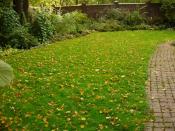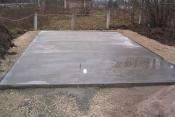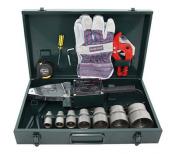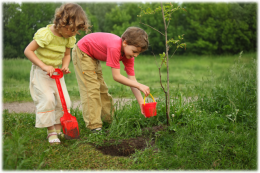Search
Login
Do-it-yourself planting fruit trees on a personal plot
Planting fruit trees is not a difficult procedure, but if you want to get healthy, fruiting trees, you should familiarize yourself with the recommendations. It is important to choose the right seedlings - capable of further growth. Decide on the date of planting, prepare the soil and most importantly, know the entire stage of planting trees.
Content
- When to plant?
- How to choose seedlings video
- Where to store seedlings video
- Site preparation
- Rules for planting fruit trees video
When to plant?
Most fruit trees are planted in mid-autumn, at this time the soil is still warming well, which gives an impetus to the formation of new roots, the seedling will have time to prepare for spring growth before spring. Planting trees in spring is suitable for less frost-resistant seedlings, these are cherries, apricots, cherries and peaches, they do not tolerate sudden changes in temperature more than other fruit trees. The main thing in the spring planting is to have time to plant the trees before the buds open (mid-April).
Planting cherries in spring, as well as cherries, can be postponed until autumn, if the variety is frost-resistant. Planting apricot in the spring is required, the seedling is very thermophilic.
Seedlings purchased in containers are planted from spring to autumn, their root system is well developed, the trees take root in a new place without problems even during a warm winter.
How to choose seedlings
Before buying, determine the grade of seedling. The variety affects the taste of the fruit, the ripening period, the occupied garden area, the seedling resistance to diseases and pests. Always inspect seedlings for visible damage, mold on the roots. Do not buy trees with swollen buds.
All seedlings of fruit trees usually meet the requirements for height, trunk diameter and root quality. Ideally, the height of the fruit seedlings should be at least 120 cm, plums - at least 140 cm become an exception. The thickness of the trunks is not more than 12 mm, the thicker trunks have plums, cherries, peaches and apricots (up to 15 mm). Each healthy seedling has 4 roots (or more). If these rules are followed, you have a high quality tree.
Where to store seedlings
If it is not possible to plant seedlings immediately after purchase, it is necessary to provide them with proper storage conditions. For this purpose, choose a room without lighting, preferably with a northern location. Regularly water the roots, preventing them from drying out. Seedlings in containers can be stored for up to a month, with open roots arrive, as suggested below.
Site preparation
Site preparation begins 6 months before planting seedlings. Weeds are regularly removed to minimize their new growth.
After planting, mulching will help protect the plants from new weeds, but even the thickest layer of mulch will not reduce the roots of dandelions, wheatgrass or thistle in the soil. Herbicides that act only on this type of plant cope with such roots.

After weed control, the soil is fertilized with peat, compost or manure. You can also sow siderates and dig them up before planting trees. Check the soil pH if liming is too low. In the spring, they begin to prepare the site in the fall, for new autumn plantings at the end of summer.
Mineral fertilizers are applied in the spring in April-May during planting or after the winter period, if the seedlings are planted in the fall. Well-known complex mineral fertilizers are used, for example, Azofoska or Fruktus at the rate of 30 g per sq.m. In June, to prepare seedlings for winter, mineral fertilizers are applied again.
On light, sandy soils, mineral fertilizers are easily washed out, in order to prevent the rate of fertilizer is divided and applied to the soil several times.
The place to plant fruit trees is selected based on the resistance of the variety to frost. Resistant varieties are planted in any, sunny spot. Seedlings of less resistant varieties are planted next to the hedge or building, this will protect them from cold winds.
Rules for planting fruit trees
To get started, check out the recommended planting of fruit tree seedlings by their number per meter:
- Dwarf apple trees 1-2 seedlings per 3.5 m
- Standard apple trees 2 x 4 m
- Pear 2 x 3m
- Plum, apricot, peach, cherry 2x 4.5 m
- Cherry 3 x 4.5 m
Varieties of dwarf seedlings are planted at a distance of at least 2 meters from the wall. Apricots, cherries, walnuts at a distance of 3 m from the fences.

Planting trees begins in cloudy weather, when both the soil and the air are moist. A pit for planting trees is on average 50 cm in diameter and 40 cm deep, this is enough for a developed root system. For sandy, heavy soils, the depth and diameter of the pit increase by 5-8 cm. The roots of the seedlings are watered and carefully covered with soil. On clay soil, seedlings do not water during planting, since excess moisture will go away for a long time, which will lead to rotting of the roots.
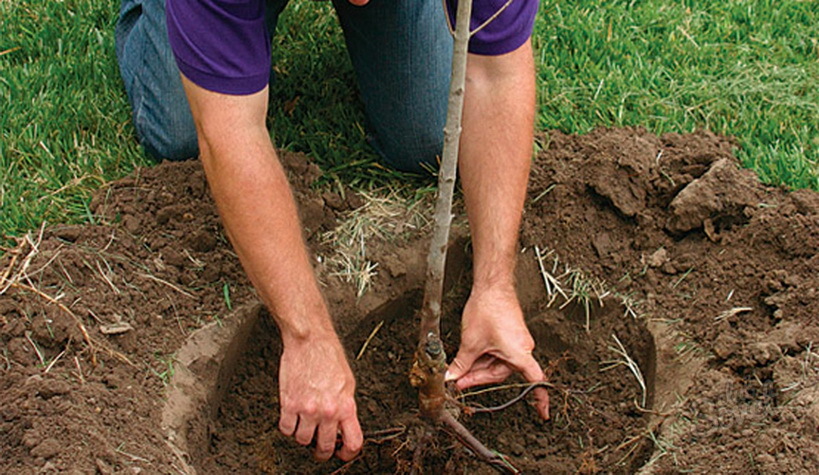
If the plot is windy or seedlings with a weak root system are driven in pegs, the tree is tied with a peg for better adhesion of the roots to the ground. The land after planting should not be dry, the calculation of water for one seedling is 5 liters, but the soil is watered while it receives water.

The next step is compaction of the soil using conventional trampling, while avoiding excessive compaction. When planting, do not deepen the root neck of the seedling by more than 5 cm.
After planting, a layer of mulch 3-5 cm thick is laid around the seedling to help the roots retain moisture and reduce soil temperature fluctuations. Proper planting of trees is the key to successful growth and harvest in the future, do not make mistakes during planting!
